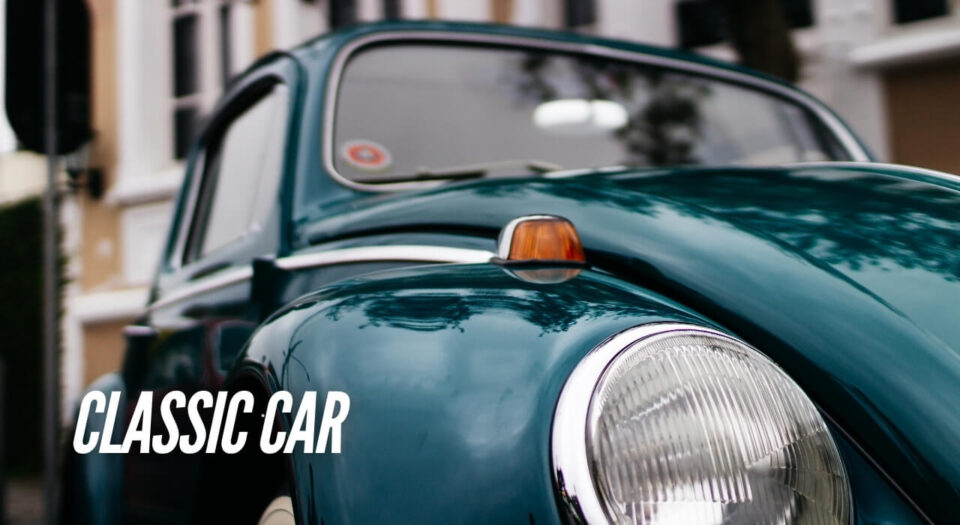Owning a classic car is a passion for many, but it requires more attention to detail compared to modern vehicles. While the thrill of driving a well-preserved vintage vehicle is unmatched, it’s important to stay on top of maintenance tasks, even for seemingly minor issues. Small problems can quickly snowball into larger ones, potentially leading to costly repairs or even major breakdowns. Routine maintenance helps ensure the reliability and longevity of your classic car, making it essential for avoiding disasters on the road.
Addressing Small Issues Before They Escalate
For classic car owners, it’s not just about keeping the vehicle aesthetically appealing but also ensuring it’s mechanically sound. Over time, wear and tear on components are inevitable, and ignoring minor signs of trouble can set off a chain reaction of larger, more complex issues. Catching problems early, whether they are related to fluid leaks, unusual noises, or minor electrical issues, is critical to preventing them from escalating into significant failures.
For instance, an oil leak may seem like a small issue at first, but neglecting it could result in lower oil levels that affect the engine’s lubrication, potentially leading to severe engine damage. Similarly, a worn-out fan belt might just produce a faint squeaking sound, but if left unchecked, it could snap, causing the engine to overheat and possibly damage other components.
Warning Lights and Dashboard Alerts
Classic cars may not have the advanced diagnostic systems found in modern vehicles, but many still feature basic warning lights and dashboard alerts that should never be ignored. If a warning light comes on, it’s a sign that something needs attention. Here are some common indicators and why addressing them is crucial:
- Oil Pressure Light: If this light illuminates, it indicates low oil pressure, which can cause severe engine damage if not addressed promptly. Regularly checking the oil level and replacing the oil and filter according to the car’s maintenance schedule is essential.
- Temperature Gauge: Overheating is a common issue with older cars, especially if cooling system components are worn or if the coolant is low. If the temperature gauge shows higher-than-normal readings, it’s important to investigate the cause immediately, as an overheated engine can lead to a blown head gasket or other serious problems.
- Battery Warning Light: Electrical issues are more common in classic cars due to aging wiring and components. If the battery warning light appears, it could be a sign of a failing alternator or an old battery that needs replacement. Addressing this early can prevent sudden loss of power.
Common Small Issues That Shouldn’t Be Ignored
Classic cars often present maintenance challenges that differ from modern vehicles due to their age and mechanical design. While these older cars may have fewer electronic components, they still require meticulous care. Here are some common small issues that should be addressed to avoid more significant problems:
- Fluid Leaks: Any sign of fluid leaking from the car, whether it’s oil, coolant, brake fluid, or transmission fluid, should be taken seriously. Small leaks can quickly become larger, leading to critical levels that compromise the car’s function. Regularly inspecting fluid levels and the undercarriage can help catch leaks early.
- Brake System Maintenance: The brakes are one of the most crucial safety components. Squeaking or grinding noises, a soft brake pedal, or fluid leaks around the wheels could indicate issues with the brake pads, rotors, or brake lines. Regularly inspecting and maintaining the brake system can prevent dangerous situations and costly repairs.
- Exhaust System Inspection: A small exhaust leak may cause an increase in engine noise but, if left untreated, can lead to a loss in engine efficiency or allow harmful fumes to enter the cabin. Checking for rust, holes, and loose components in the exhaust system can help keep the car running quietly and safely.
- Rust and Corrosion Prevention: Classic cars are more susceptible to rust, which can affect not only the body but also the frame and mechanical parts. Small spots of rust should be treated immediately to prevent spreading. Regularly washing and waxing the car can also help protect it from moisture and road salt.
Regular Maintenance for Long-Term Reliability
Adhering to a routine maintenance schedule is key to keeping a classic car running smoothly. This includes tasks such as:
- Regular Oil Changes: Even if the car is driven infrequently, oil changes are necessary at least once a year or according to mileage recommendations to keep the engine properly lubricated.
- Coolant System Flushing: Older cooling systems can suffer from buildup and corrosion. Flushing the coolant system every few years can help prevent overheating issues.
- Fuel System Care: Fuel filters, lines, and injectors should be inspected regularly, especially if the car sits for long periods. Using fuel stabilizers can help keep the system clean and prevent clogging.
- Checking Tire Condition: Tires on classic cars can wear unevenly due to suspension alignment issues or prolonged storage. Regularly inspecting the tire tread and checking for signs of dry rot can help avoid blowouts.
The Importance of Keeping a Maintenance Log
Maintaining a detailed log of all maintenance and repairs can be a lifesaver for classic car owners. This log not only helps keep track of when specific tasks were last performed but also provides a history of the vehicle’s condition, which is valuable for troubleshooting future issues or when selling the car. A maintenance log can also help ensure that no crucial tasks are overlooked, contributing to the car’s long-term reliability.
Keeping Your Classic Cars Running
Routine maintenance isn’t just about fixing what’s broken; it’s about preventing problems before they happen. For classic car enthusiasts, this means keeping a close eye on even the smallest details to avoid turning minor issues into major disasters. By addressing small problems promptly and adhering to a regular maintenance schedule, you can enjoy the thrill of driving a classic car without the stress of unexpected breakdowns. Taking these proactive steps not only keeps the car running smoothly but also preserves its value and ensures it remains a reliable piece of automotive history.

